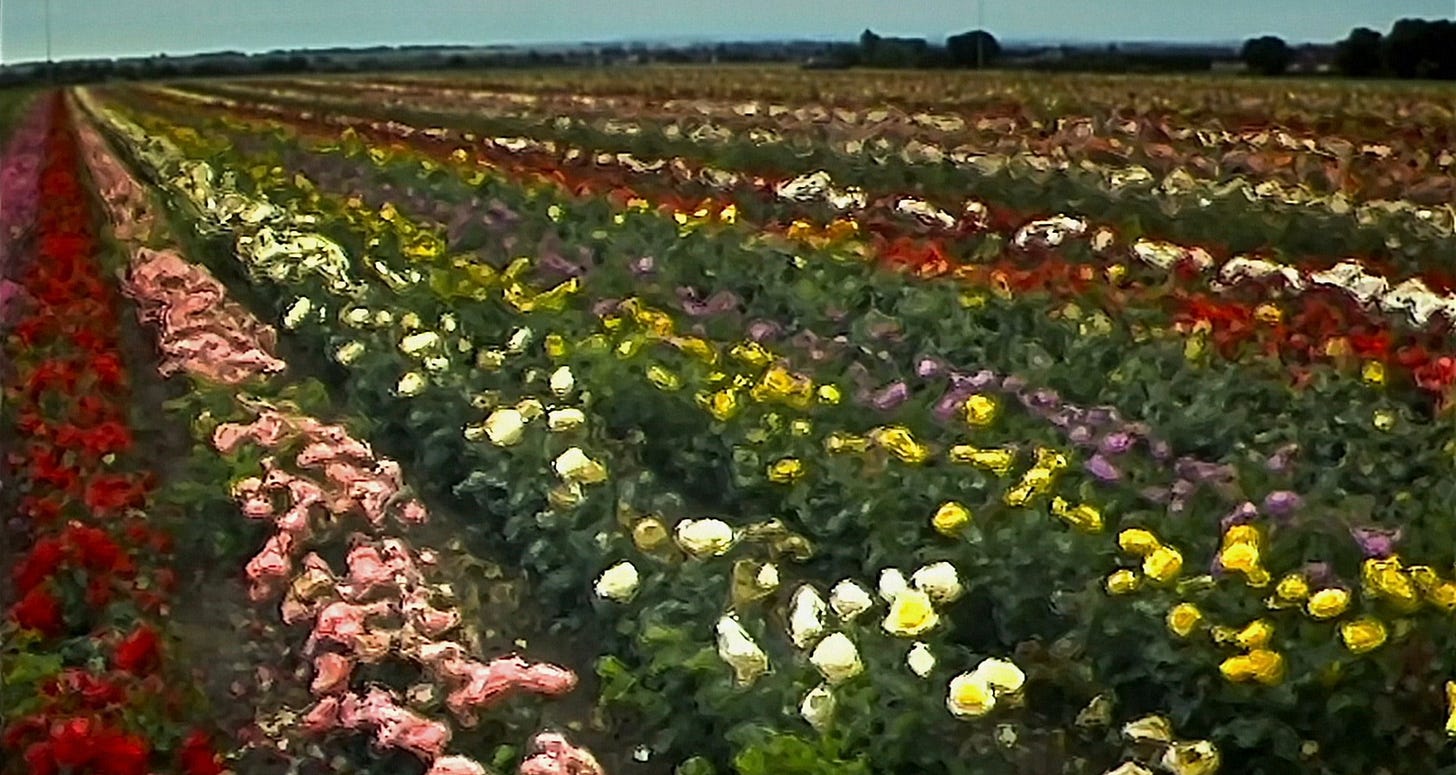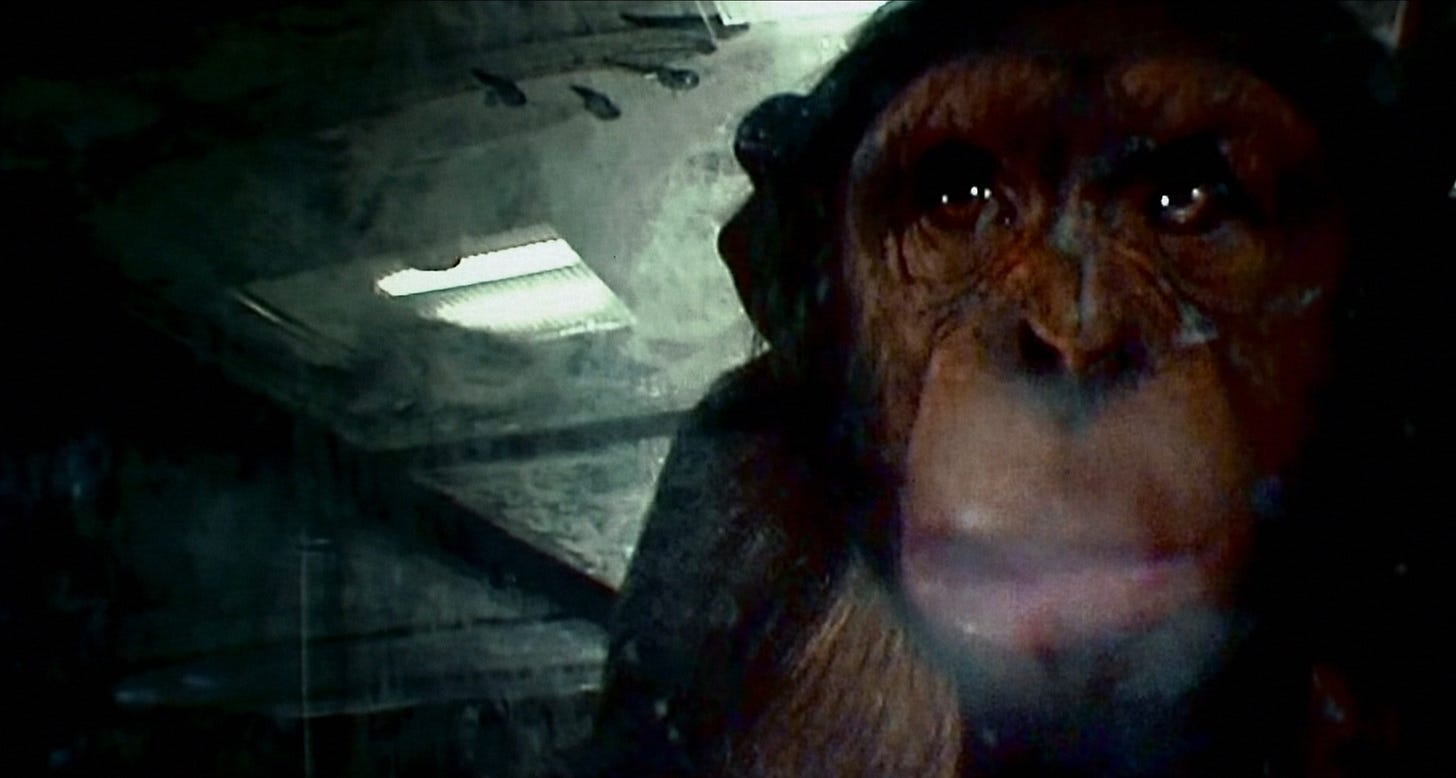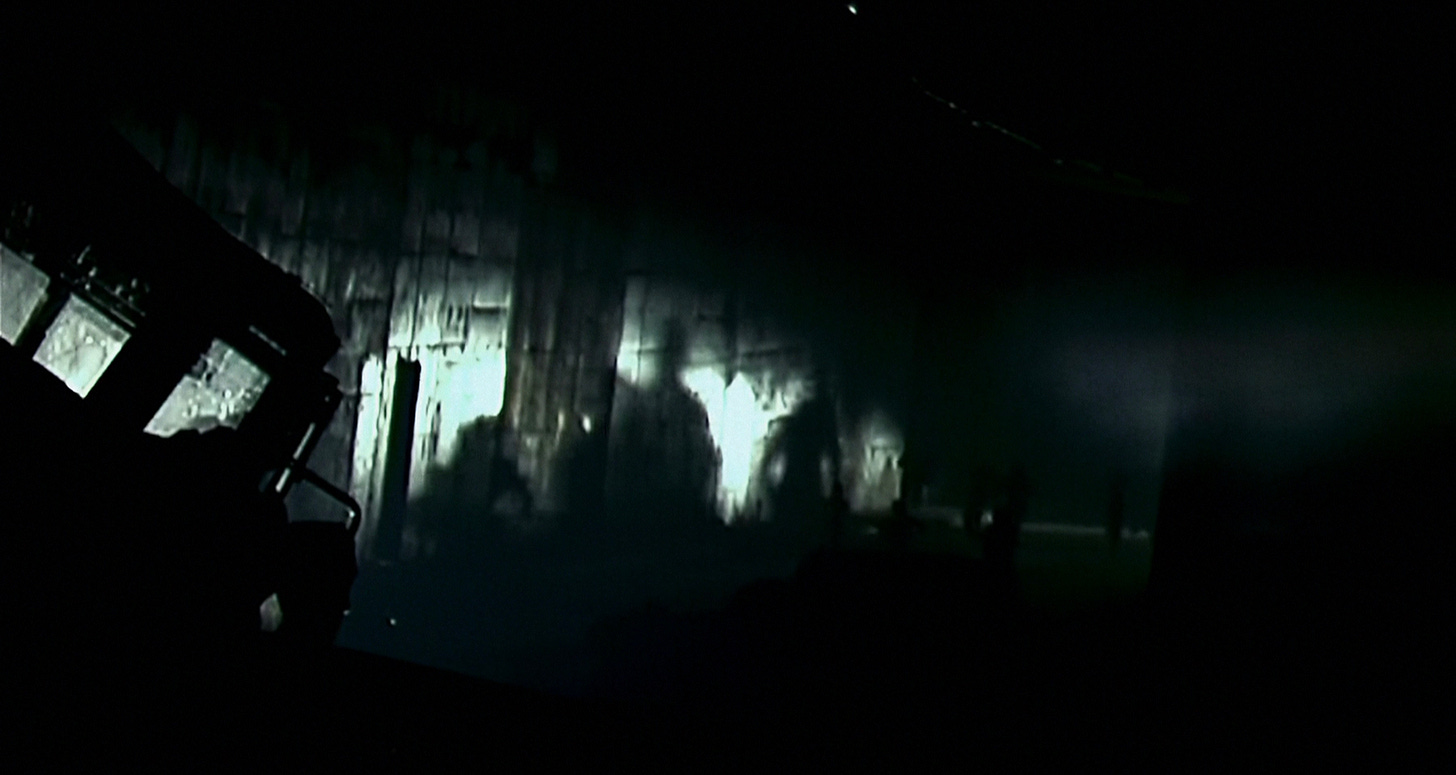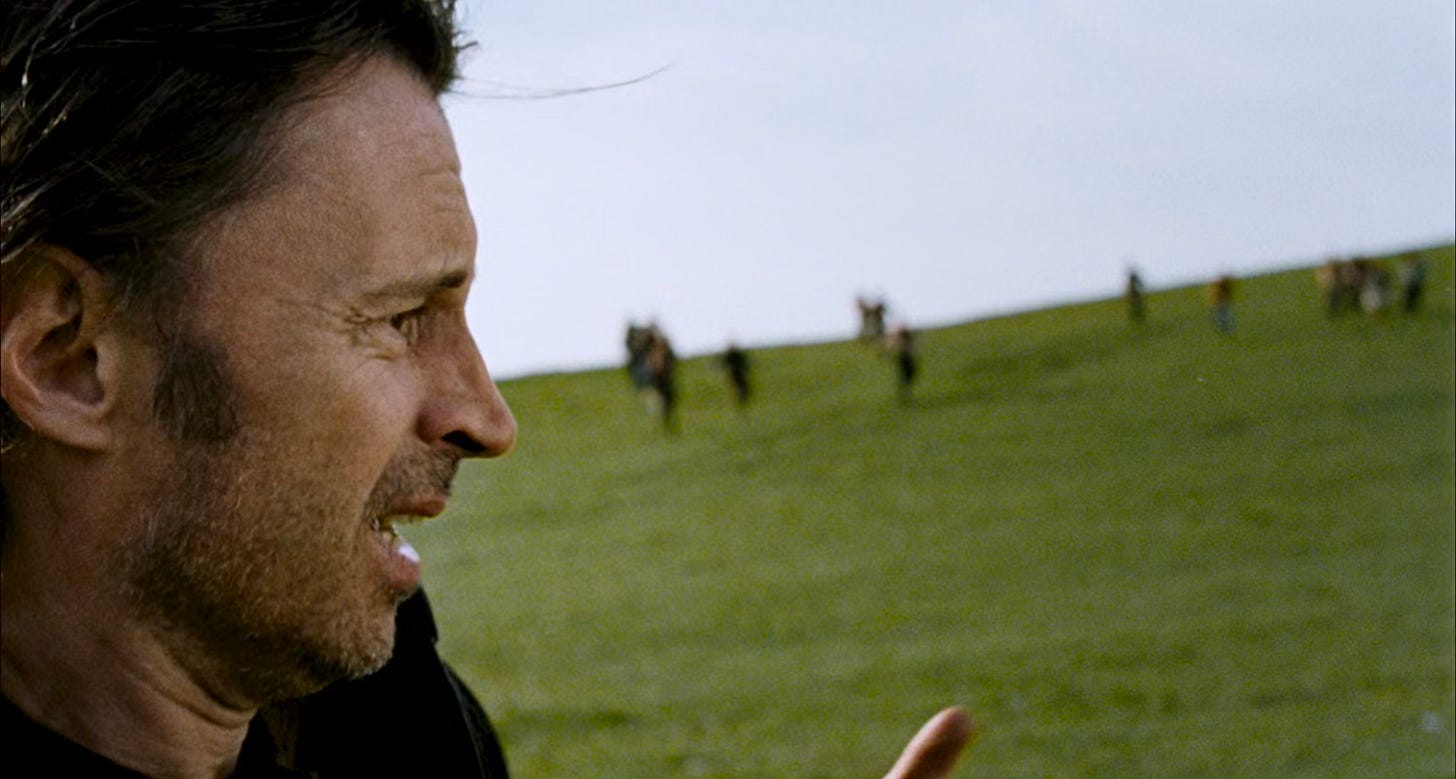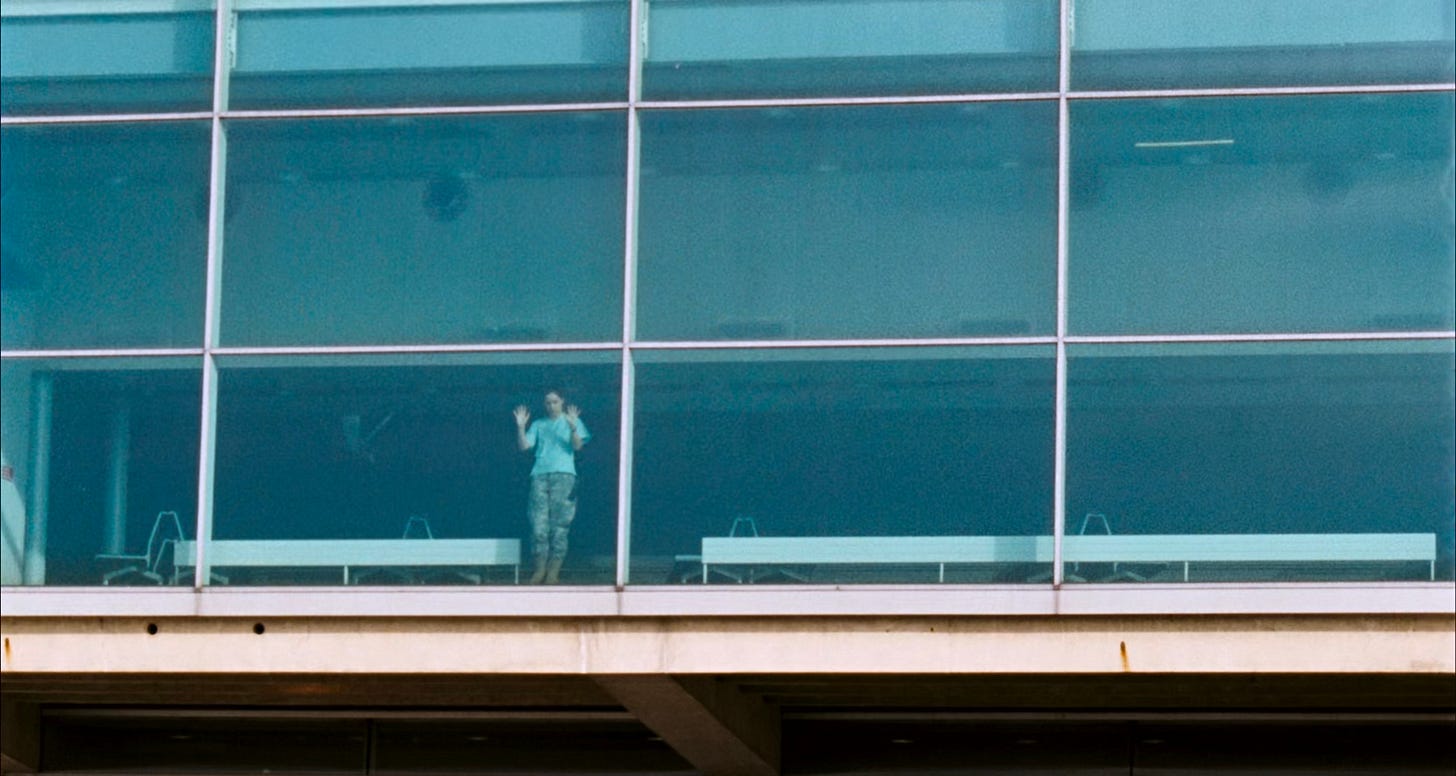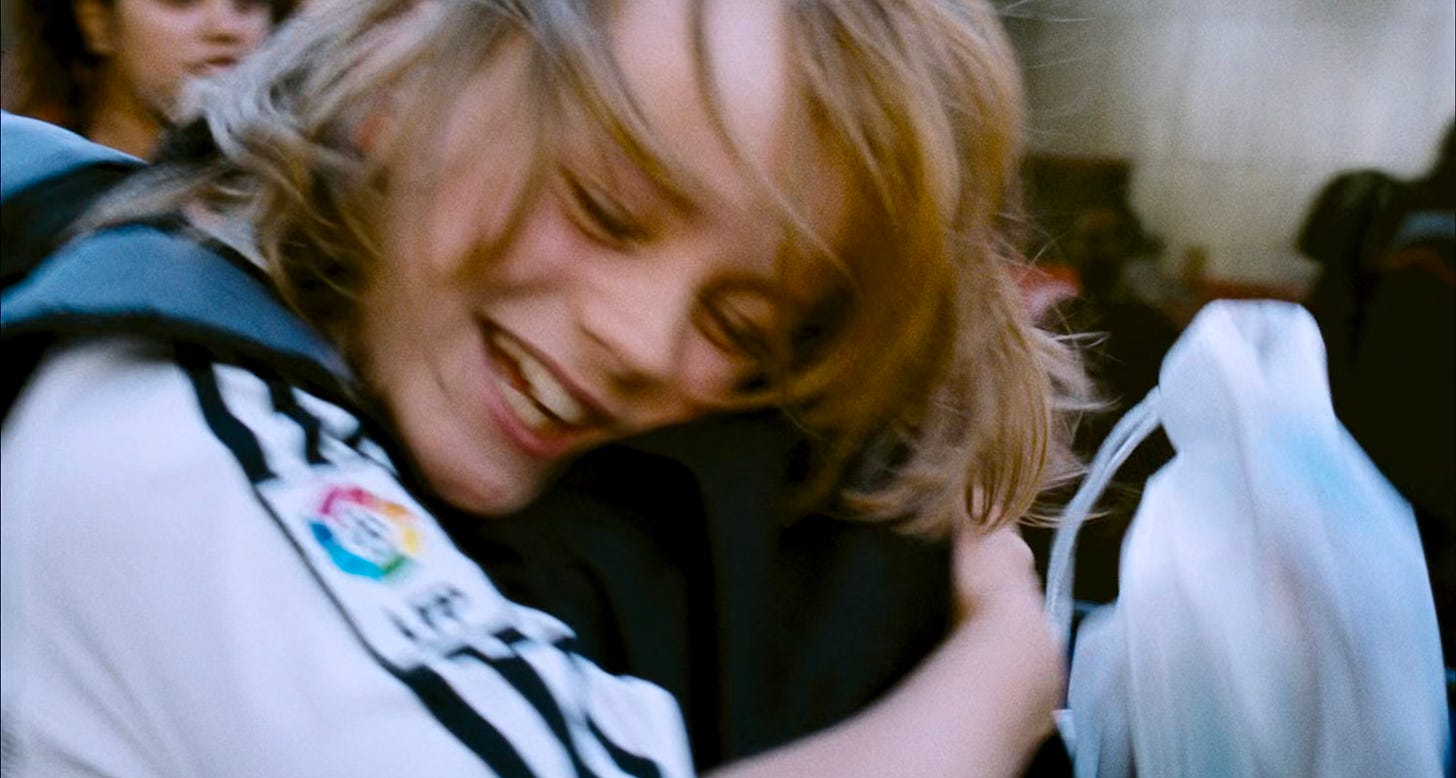Digital Diamonds in the Rough
A few words about '28 Days Later'
New technology produces new ways of interacting with the world, understanding it, engaging it. It produces new relations and new modes of thought. When digital cameras arrived on the filmmaking scene, they came with the promise of liberation, from the cumbersome qualities of motion picture film and all its photochemical quirks and limitations, and from the standard economic models of movie production and distribution. Indeed, by the end of the ‘00s, a digital revolution was afoot in the world of cinema. Studios and directors were rapidly shifting to digital capture, and after Avatar, the currents bringing in the new future of digital projection had become a tsunami.
In 2022, writing for N+1, Will Tavlin laid out the failure of the digital revolution to be anything revolutionary. In his article, “Digital Rocks,” Tavlin broke down how the shift to digital occurred at the behest of studios and distribtors, the capital-holders, who saw in the new technologies of filmmaking and presentation a new avenue for consolidating control over the means of production and distribution in filmmaking. “Tellingly, the vast majority of digital films that Hollywood produces bear little resemblance to the guerrilla, made-for-nothing filmmaking that digital cinema once promised,” he wrote. Claims that digital would democratize filmmaking did not pan out in a world where making a movie is still an expensive ordeal. Liberation did not arrive, including the liberation of aesthetic thought. Films like Dancer in the Dark and Bamboozled, which Tavlin cites for their early, grody digital style, did not become the model. “Digital filmmaking, as it exists today on streaming platforms and in AMC theaters, demands the most expensive equipment with the highest technical standards that produce the same generic look,” Tavlin said. Digital production tools, by and large, have been put to use making work that either masquerades as photochemical film, or otherwise displays the sheen of Hollywood money in largely empty, sterile imagery.
This week sees the release of Danny Boyle’s 28 Years Later, the long talked-about second sequel to his 2002 film 28 Days Later, which revived the zombie genre with an unexpected shot of adrenaline. Infected, rather than actual zombies, and fast-moving, all set within an England emptied out in post-apocalyptic fashion, with striking shots of a lone man walking down the streets of a deserted London lodging themselves into the collective consciousness. Its innovations were also digital. The film was Boyle’s first with cinematographer Anthony Dod Mantle, who’d already been experimenting with digital video on films like Thomas Vinterberg’s The Celebration and Harmony Korine’s Julien Donkey-Boy before the end of the 20th century. 28 Years Later took those Dogme 95 experiments in a new model of independent filmmaking and brought them into a more traditional style of studio-backed production. Shot on a Canon XL1 MiniDV camera, the film looks like nothing else. Ugly, likes its subject, but rendered with such artfulness, such beauty.
Like many in the lead-up to Years, I went back and watched both 28 Days Later and its 2007 sequel 28 Weeks Later. And like many, I had a memory of what the movie(s) looked like, only to discover that I’d not remembered—or perhaps not appreciated—just how weird they look.
Though not representative of any kind of revolution in the capitalist model of film production, 28 Days Later stands as a reminder of the aesthetic liberation we were denied. Not that every film needed to be as ugly-beautiful as this one—or Lynch’s Inland Empire, for example—but watching it in the year 2025, there’s an inescapable feeling of a whole world of aesthetic possibilities that have been lost, or perhaps denied to audiences. We’ve arrived at a moment in the life of the art form where a movie can, essentially, look like anything, while the images we get hardly reflect the imagination necessary to explore that open aesthetic realm in a meaningful way within mainstream work.
To watch 28 Days Later now is to bear witness to an alternate reality, a different path we might have gone down, in which the inevitable intrusion of digital cinema ushered in a completely different kind of movie image. That it was a sizeable hit, and so influential, only makes it sadder that its visual experimentation is such an exception to the rule. What I did not expect in my rewatch was the discovery that 28 Weeks Later, a film I hadn’t seen since it originally played in theatres, also represented a lost road. Shot primarily on 16mm—with 35mm mainly used for day-for-night scenes—the sequel nonetheless sits squarely within the early digital revolution.
Directed by Juan Carlos Fresnadillo and shot by Enrique Chediak (who later shot 127 Hours for Boyle, and most recently shot… A Minecraft Movie…), 28 Weeks Later was made a few years into the conversion to digital intermediates. For those unaware, digital intermediates (or DIs), involved scanning the film negatives and then doing all the colour timing (now called colour grading) in the digital realm. In a post-MTV world, bright, poppy, often garish aesthetics were already normal, but digital grading allowed new levels of visual fuckery. Many films from that period, like those by Tony Scott, pushed film into a whole new visual space, aided by the sacrilegious marriage of photochemical and digital filmmaking. 28 Weeks Later may have been shot on film, but it’s as representative of the digital revolution as its predecessor. Its images carry an organic spirit, so heavily processed until it looks, simply, like something new, if perhaps less daringly ugly than Boyle’s first film.
It’s there in the alternately boosted and drained colours, as well as the weird, smeary quality of the 16mm film grain translated by 00s-era scanning and pushed to the limits by the technicians who worked on the film grade. Though recognizably filmic, 28 Weeks Later also feels like it’s about to melt or break apart visually at any moment.
Fresnadillo and Chediak found in the digital realm genuinely new possibilities for visual expression, in keeping with Boyle and Mantle’s experimentation. But rather than drive toward a camcorder-based style familiar from home movies—though seriously twisted—28 Weeks Later captures something more memoiristic in its visual scheme. At times, the film looks like something out of a collection of old home movies or slides, filtered through oversaturation, over-exposure, and over-processing, creating a visceral, almost nostalgic effect that’s immediately challenged by both the horror on display, as well as the rapidity of the cutting and jittery hand-held camerawork. A bit like a Jonas Mekas film on the craziest steroids.
Unlike 28 Days, its sequel has a look that was, indeed, more common in its period. Impossible to watch it and not feel the influence of so many commercials and music videos and films. City of God walked so 28 Weeks Later’s Rage-infected zombies could run. Tastes change, aesthetics evolve. This is normal. But that style, which had reached a high point, aided by the new digital technology of the time, has almost entirely disappeared. Filmmaking, by and large, has become a flat affair. Beautiful images are still produced aplenty, but often without the charge of true experimentation or interest in pushing the boundaries of digital technology’s possibilities and limitations, along with the audience’s willingness to accept such images.
Danny Boyle never really stopped pushing, though, particularly in his work with Mantle on films like Trance and T2 Trainspotting (not to mention, 2008’s Slumdog Millionaire, the first digital film to win Best Picture, and shot on a deconstructed prototype camera). Now the two have returned, along with writer Alex Garland, to their zombie creation with the new sequel (and kick-off to a new trilogy), 28 Weeks Later. I’ll have more to say on that one in the coming days, but suffice it to say, it’s one of the most exciting studio films released in an age. Originality in spades, and in an updating of its franchise origins, shot primarily on iPhone 15s. Other great movies have been shot on iPhones, like Tangerine and Unsane, but none have looked quite like 28 Weeks Later. Nothing has. Boyle and Mantle have leveraged the big budget at their disposal to put these revolutionary tools to work in service of a startlingly new aesthetic vision. One that feels outrageously modern, which is to say, scraping at the edges of digital filmmaking’s possibilities and limitations, cracking through toward a recognizable and yet totally novel way of seeing the world through cinema. And in a blockbuster zombie film, no less. The hope, it’s still alive… or perhaps undead.


